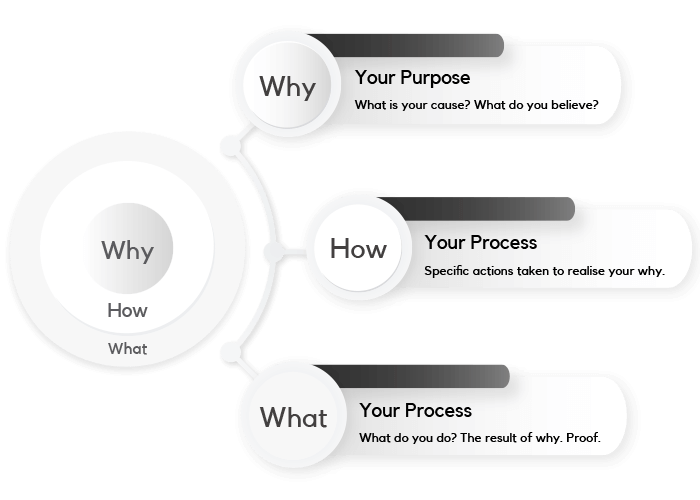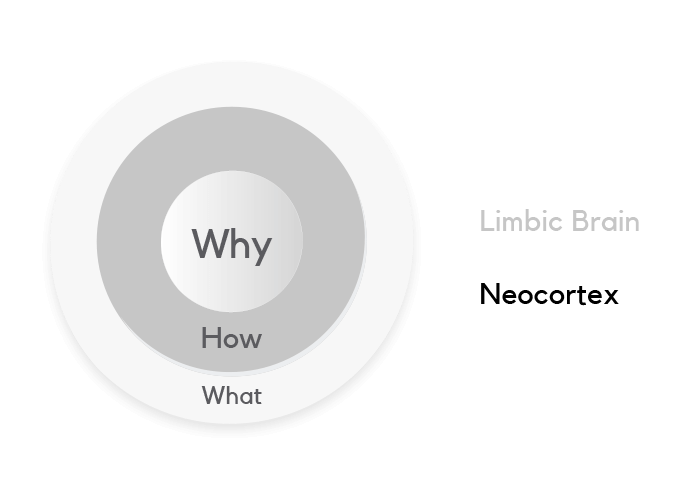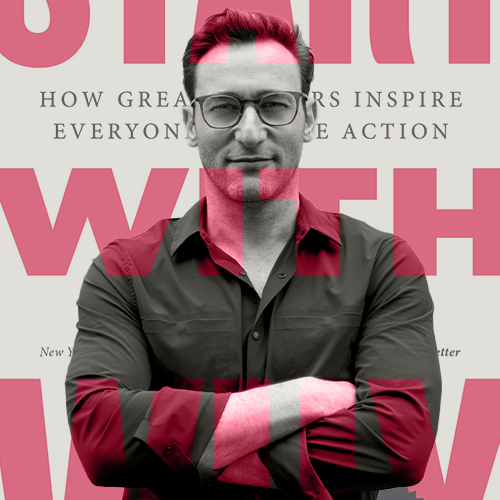Author Simon Sinek delivered a TED talk titled “How Great Leaders Inspire Action” in 2009. This viral TED presentation, which lasted 18 and a half minutes, urged corporate executives to “Start With Why.” “Why” is a strong notion, not simply a word. Simon Sinek illustrates why firms that follow this notion are more likely to thrive than those that don’t in this eye-opening book.
Chapter 1: Assume You Know
The first chapter of “Start With Why” delves into our preconceptions and how they influence our behavior. Sinek shares instances of how looking at the large picture may help you adjust your behavior to achieve long-term goals. Consider the classic rivalry between American and Japanese automakers. Workers on the assembly line at American automobile plants use a rubber mallet to apply final repairs to doors, but in Japan, doors are made to fit properly from the start.
This is also a leadership metaphor. There are two sorts of leaders: those who decide to manipulate in order to achieve their goal, and those who begin with the ultimate goal in mind and allow the rest fall into place organically.
Chapter 2: Carrots and Sticks
Customers may attract in two ways, according to Sinek: by inspiring carrots or by manipulating sticks. Manipulation employ in the majority of today’s sales strategies. Price, promotions, fear, aspirations, peer pressure, and novelty are among them. The most obvious kinds of sales manipulation are pricing and promotions, but fear, ambitions, peer pressure, and novelty are less obvious.
Whatever sort of manipulation use, it’s crucial to remember that these are only temporary fixes that lead to a cycle of manipulation. Continuing along this route for too long will have a negative influence on long-term profitability, but there is another option, which discloses in Chapter 3.
Chapter 3: The Golden Circle
The discovery of The Golden Circle lies at the heart of Simon Sinek’s “Start With Why.” The Golden Circle is divided into three sections: Why, How, and What.

Why: Only a small percentage of people or businesses can properly express why they do what they do. This isn’t about operating a successful business—a that’s side effect. It’s all about your reason for being. What is the purpose of your business? What motivates you to get out of bed each morning? What’s more, why should anyone care?
How: Some people and businesses have figured out how to accomplish what they do. HOWs are frequently use to describe how something is different or superior, whether they are referred to as a “differentiating value proposition” or a “unique selling proposition.”
What: Every organization on the earth has a clear understanding of what they do. This is true regardless of how big or small the firm is, or what sector they are in. Everyone can readily describe the items or services that their organization sells, as well as the job role that they do inside it.
Starting with “Why,” we work our way out of the circle from the inside. The “Why” is the motivation to buy, and the “Whats” are just real things that demonstrate that conviction. “Whats” are the explanations we might use to justify why we prefer one firm to another.
Apple is use as an example by Simon Sinek. Apple, in his perspective, is no different from its competitors in terms of technology. Apple, on the other hand, communicates from the “Why.” Apple’s “Why” is to question the current quo and empower people. And their willingness to challenge the current quo is evident in everything they say and do, which is why people see Apple as genuine.
This Is Not Opinion, This Is Biology, Chapter 4
The fourth chapter opens with a discussion of human nature’s yearning to belong. This passion propels us to seek out individuals who share our “Why.” Surprisingly, the Golden Circle corresponds to how our brain works.

Neocortex: The “What” level relates to our neocortex. All of our rational and analytical mind and language stems from this. This helps us to sift through massive volumes of data, but it has no effect on behavior.
Limbic Brain: Our limbic brain is made up of two parts that are responsible for all of our emotions, such as trust and loyalty. This is essentially equivalent to the “Why” level. This part of the brain is in charge of our whole behavior and decision-making.
Companies that begin with “Why,” or what they believe, will be able to tap into our natural need to use items as symbols of our values and beliefs. They make us feel unique, as if we’re part of something greater, and they give us a sense of tribe identification with everyone else who buys the same items.
Because that’s what their consumers want, most businesses start with “Whats” and “Hows.” They need high quality, a reasonable price, 24-hour service, and a large number of features.
And because it’s all based on statistics, it all seems scientific. That, however, is nonsense, according to Simon Sinek. The region of the brain that controls decision-making differs from the part that reports back on “Why” a decision was made. As a result, all of those focus groups and questionnaires are probably useless.
“If I had asked them what they wanted, they would have responded a quicker horse,” Henry Ford stated.
Chapter 5: Clarity, Discipline, and Consistency
Chapter 5 continues to illustrate why the Golden Circle is significant, but only in the correct order.
The three levels of certainty are as follows:
The maximum level of confidence we can express when we can only point to concrete aspects or reasonable measurements is: “I believe this is the appropriate option.”
When we make gut choices, the highest level of assurance we can give is that the conclusion feels correct, even if all the facts and data contradict it.
The capacity to articulate a “Why” gives emotional dimension to decisions. When you know your “Why,” the most confident statement you can make is, “I know it’s right.” Not only does it feel good when you know the decision is the right one, but you can also reason it and put it into words.
It is not the purpose of business to do business with everyone who merely wants what you have. It should be to concentrate on those who share your beliefs.
Chapter 6: The Emergency of Trust
When we perceive that individuals and institutions motivate causes other than self-interest, trust begins to form. Building trust begins with aligning the Why, How, and What.
“What” and “difference”
Companies that operate as commodity producers have a continual struggle to set themselves apart from the competitors. Pursuing the competition and attempting to match them feature-for-feature just serves to reinforce the “What” culture.
Flexibility and “why”
Companies that begin communicating with the “Why” have more market flexibility since customers motivate “Why” you do what you do. Consider the companies Apple and Dell. Apple is a company that produces computers. Apple is also known for its iPads and iPhones.
Dell, on the other hand, is known for “What” it does. Dell specializes on computers, therefore customers are hesitant to buy anything else from them, such as a tablet or smartphone. They experimented with several sectors before retreating to “concentrate on their main business.”
When it comes to “Why,” Simon Sinek also mentions the First Mover Advantage. Consider the instance of Creative and Apple. Creative was significantly more competent of developing an MP3 player than anybody else, and they were the first to do so. However, they branded their product as a “5GB mp3 player,” which sounded more like a “What.” Instead, Apple advertised the iPod as “1000 tunes in your pocket,” providing us with the “Why” we require.
“Why” and the recruiting process
Employees who feel a sense of belonging will ensure your success. And they won’t be looking for an innovative solution for you; they’ll be doing it for themselves.
The idea is to employ people who are enthusiastic about your “Why,” your mission, cause, or believe, and who have a culture-fitting attitude. Only when this has been verified should their skillset and experience be assessed.
Great firms don’t employ qualified individuals and then try to excite them; instead, they hire people who are already driven and then inspire them. Employees are inspired by companies that have a strong sense of “Why.” Employees who feel valued at work are more productive and imaginative, and the atmosphere they create attracts others who want to work there as well.
Chapter 7: How a Tipping Point Tips
How can you tell the difference between a passing trend and a life-changing concept?
Everett M. Rogers’ Law of Diffusion of Innovations refers to the bell curve of product acceptance. The curve depicts the proportion of the market who accept your product, starting with Innovators (2.5%), then Early Adopters (13.5%), Early Majority (34%), Late Majority (34%), and Laggards (34%). (16 percent).
Early adopters are those who stood in line for hours or days outside an Apple shop to get the latest iPhone. They are on the left side of the curve. People on the extreme right, on the other hand, are never satisfied and never faithful. It would be smart for a corporation to have a better understanding of the far right side of this curve so that it does not spend time and money attempting to convert them. While some of them may choose to do business with you, if they find a better bargain, they will almost certainly move to one of your competitors.
The purpose of a business is to be crystal clear about its “Why” and to locate individuals who believe in the same things as you do. Once the 15-18 percent on the left side of the bell curve are satisfied, they will persuade the others to follow.
Chapter 8: Start With Why But Know How
Energy stimulates, but charisma motivates much more. It’s simple to view, measure, and replicate energy. All great leaders have charisma because they have a clear sense of “Why,” an unwavering belief in a cause or goal greater than themselves.
Bill Gates and Steve Ballmer are two examples given by Sinek. Steve Ballmer was a vivacious individual. Despite his shyness and awkwardness, Bill Gates is charming. People are energised when Steve Ballmer talks, but this swiftly dissipates. People listen with bated breath when Bill Gates talks. Those teachings stick with them for weeks, months, or even years. Energy does not demand loyalty, whereas charisma does.
Types of “Why” and “How”
Every “Why” leader is accompanied by a “How” leader who brings the “Why” to life.
Visionaries with hyperactive imaginations are “Why” sorts. They are optimists who believe that whatever they can conceive may be realized, and they are preoccupied with things that most people cannot see, such as the future. Instead, “How” types are more practical and realistic, and they are more focused on the things that most people can see and are better at constructing them.
Simon Sinek, for example, claims that “How” types can be extremely successful, but that they seldom develop billion-dollar firms that alter the world. While a “How” type doesn’t always require a “Why” type to succeed, a “Why” type must. Otherwise, they’ll wind up as hungry dreamers.
Statements of Vision and Mission
The distinction between “Why” and “How” types also highlights the distinction between an organization’s vision and mission statements.
The founder’s goal, or “why” the firm was formed, is the vision. The mission explains “How” the firm intends to build that future.
When both are clear, the “Why” and “How” types of leaders will be better able to define their responsibilities in the relationship.
Chapter 9: Know Why. Know How. Then What?
A founder has a lot of direct interaction with the outside world while a firm is tiny. The leader’s job evolves as the company expands. He or she will no longer be the loudest portion of the megaphone; instead, he or she will be the source of the message that will be broadcast via it.
The “Why” locates in the area of the brain that regulates feelings and decisions, but not language. In the area of the brain that handles logical thought and language, “whats” exist.
The leader is a source of inspiration and a representation of why we do what we do. They reflect the limbic system of the brain, which controls emotions. The neocortex’s rational cognition and language are reflected in what the corporation says and does.
Most businesses find it difficult to stand out or express their genuine worth to the outside world. When we struggle to put our feelings into words, we turn to metaphors, pictures, and analogies to help us explain our feelings. We make use of symbols. We make concrete objects for individuals that believe in what we’re saying. Marketing products and services is, if done correctly, a method for businesses to communicate with the outside world.
Chapter 10: Communication is about Listening
Symbols assist us in making the invisible concrete. And the only reason symbols have meaning is if we assign it to them. A logo can only become a symbol if it motivates others to use it to express themselves.
Take, for example, Harley Davidson, which represents the principles and lifestyle of those who wear it. Harley-Davidson no longer represented by the symbol. Rather, the logo represents a full set of values—their own. The insignia no longer represents Harley, but rather the individuals who appreciate the motorcycles for what they are.
Also Read: Why is Digital Marketing important for e-commerce?
The Celery Challenge
What is beneficial to your competitors is not beneficial to you, and vice versa. But how can you know what’s healthy and what’s not? Sinek recommends The Celery Test to accomplish this.
Imagine being told that you need cookies, Nutella, celery, fruits, and ice cream to develop. Should you acquire all of them? No, since it’s time-consuming, costly, and disorganized. Everything you do filters through your “Why.” So, if your “Why” is to live a healthy lifestyle, you’d most likely choose mainly fruits and/or celery. You save money, and time, and, most importantly, you stay true to your purpose when you filter your selections via your “Why.”
Chapter 11: When Why goes Fuzzy
Sinek discusses firms that have lost sight of their initial “Why” in this chapter. Take Volkswagen and Walmart, for example. Volkswagen actually means “people’s vehicle,” and its image has always been one of dependable, inexpensive automobiles for everybody. The original Volkswagen Beetle was a bright emblem of freedom and a carefree lifestyle. As a result, when they debuted the $70,000 VW Phaeton, it went against their “Why” and sold no cars.
Walmart, on the other hand, was a more serious instance. Sam Walton founded Walmart with the goal of assisting individuals and communities by offering low-cost goods. However, with the death of its founders, the corporation became only focused on low costs, neglecting to aid individuals and the areas into which it had expanded. It eventually turned into a ruthless company with regard to its suppliers, workers, and the communities in which it operated. When Walmart lost its initial “Why,” it ran into a lot of difficulty.
The toughest aspect, according to Sinek, is not figuring out “Why.” The most difficult component is maintaining the discipline to follow one’s instincts rather than outside counsel and to stay faithful to one’s cause or viewpoint.
Chapter 12: Split Happens
I had a thought. That’s most likely where any business begins. Ideas motivate enthusiasm in the beginning. That powerful feeling might lead us to make illogical decisions.
Passion, on the other hand, need frameworks and “Hows” in order to develop and endure. Most businesses fail because both “Hows” and “Whys” are interdependent.
Chapter 13: The Origin of a Why
You’ve probably heard that market research is essential when starting a business. You do market research, learn about your target market, and then develop your specialty. Sinek, on the other hand, is not convinced. The “Why,” according to Sinek, does not emerge from planning ahead to see what you want to accomplish and then devising a method to get there. It isn’t the result of market research or even in-depth interviews with consumers or staff. It comes from staring in the opposite direction of where you are currently. Discovering the “Why” is a process, not an invention.
The answer to the question “Why” can be found within you. The hardest thing is staying faithful to your “Why” once you’ve discovered it.
Chapter 14: The New Competition according to Simon Sinek
No one wants to help you when you’re up against the world and competing with everyone else. When you compete against yourself, though, everyone is eager to assist you.
Let us now consider how we do business. We’re always up against another person. A higher standard. There are more features. Better customer service. We’re always comparing ourselves to others. No one wants to assist us.
What if we went to work every day determined to be better than we were the day before? For no other purpose than to leave the company in a better shape than when we first arrived?
Every company begins with “Why,” but only the best maintain it clearly year after year. Those who have forgotten “Why” found to arrive at the race every day hoping to outdo someone else rather than outdoing themselves.
You are your toughest rival.










